General Insurance Blogs, Articles & Updates by - Magma HDI
Have us call you
- RENEW YOUR POLICY
- BUY NEW POLICY
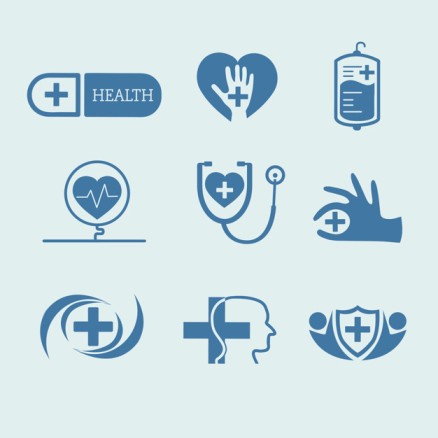
Things to Know Before Buying a Health Insurance Plan for Your Family
Maintaining your fitness might be a controllable factor, but predicting medical help indeed isn't. And we already know that the enormous hospital bills can suck up all of your savings, making you wish you had a health insurance plan.
There is no doubt that the benefits of an insurance policy are precious and useful at crucial times. However, with a sea full of policies out there, it can get tough to make a decision. To ease this, we've listed some critical aspects to consider before you buy Health Insurance Online in India:
● Determine Age-Related RequirementsOne of the most significant and primary aspects while buying health insurance is your age. Determine your and your family members' age before you proceed towards your purchase. Generally, the premium payable to individual plans depends on the age of the oldest member of your family. Another element is that many plans come with certain limitations in terms of the age for entry. While some allow age limits up to 60 years, others only cover up to 50 or 55 years. Likewise, the age for entry also depends on the type of policy you choose, while some permit newborns with 90-95 days and others start from age like 20 or 25 years. There might also be some policies that don't limit their coverage based on age-related factors. A piece of advice would be to check and verify the age limit when it comes to buying your health insurance.
● Determining Premium & Coverage Related Factors Many consider lower premium plans to be more favorable as there are fewer expenses involved. On the contrary, the lower premium plans have lower coverage period. The next time you see a policy with a low premium, try to verify the reasons. Look out for any different payment sources dated for future dates, restrictions; this will help ensure that you won't pay a great deal of money when you claim your policy. As far as there are no such additional costs or limitations on the coverage, you're good to go.
● Agreements On The Waiting Duration A waiting duration is where the insured person must wait for a particular duration due to prevailing health conditions like blood pressure, arthritis, thyroid, and more. Being well acquainted with the duration given by your policy can help you make the appropriate decision. Generally, the waiting duration ranges from 1 to 2 years or more, depending on each policy provider.
● Advantages Correlating To Hospital Bills The best part about buying a health insurance policy is that you don't have to pay any hospital bills as the insurance company directly sends out your coverage amount to the hospital. However, one thing to determine is that this coverage is only listed under individual hospitals; not all hospitals are part of their system.
However, can you imagine the number of form fillings and other tedious formalities that you can skip once you buy health insurance online in India?
● Coverage Benefits Before And After Your Hospitalization While you're looking at a specific type of insurance plan that primarily covers your hospital bills, make sure you check the coverage benefits. What you're missing out on are policies that cover hospital bills and the expenses associated before and after your treatment like physical check-ups, physiotherapist sessions, and more. When you pay for a policy, isn't it essential that you get all the benefits you'd admire? Save your medical expenses fully!
● Coverage Benefits Before And After Your Hospitalization While you're looking at a specific type of insurance plan that primarily covers your hospital bills, make sure you check the coverage benefits. What you're missing out on are policies that cover hospital bills and the expenses associated before and after your treatment like physical check-ups, physiotherapist sessions, and more. When you pay for a policy, isn't it essential that you get all the benefits you'd admire? Save your medical expenses fully!
● Coverage Benefits For Pregnancy One of the aspects that everyone misses out on is checking whether your policy covers medical bills related to your pregnancy. And you'd certainly be surprised to know that a lot of them don't. Also, many policies that cover this type of expense hold a waiting duration ranging from anywhere between 2 to 4 years. You can also plan your pregnancy accordingly.
Final words
Plan your policy ahead of time and consider what aspects are fundamental to you. This can certainly save you a lot on medical bills.
Quick tips:
● Navigate & Compare: These are the two primary things to consider before buying a health insurance policy.
● Check all the necessary related benefits.
● Ensure that the list of network hospitals are close to your vicinity.

Important things to know before you set on a cruise trip
The sea has always opened up numerous opportunities for humankind. And now, with cruises becoming popular in the travel culture, people want to avail this luxurious and unforgettable adventure. Sailing from one horizon to another, experiencing the waters, foreign sunsets, and the regal amenities of the ship, make a complete package and a perfect bullet on your bucket list.
Planning a cruise trip can be intimidating and overwhelming. Ships are now as high as six to ten storeys and can contain upto three thousand passengers! You'll come across people from various cultures and backgrounds when visiting different port cities and countries. With expansive breathtaking views of the ocean, enjoy the vibes of a unique vacation far away from the city crowd and hassle. Cruise companies make every effort to make the guests feel welcome and curate experiences that cater to all travellers' expectations.
In this article, we will discuss some essential things to know before you set out on a cruise trip.
1. Windowless cabins:
For first-time cruisers, this can come as a shock. Some rooms may look like a coach in a train (size), but they might not have a window. These cabins are small spaces and can be congested for some. If you are uncomfortable in tiny spaces, make sure you check the amenities before booking a room. You can always travel with a partner to split the cost of the room if the price is too high.
2. Dress codes:
Some cruises have strict dress codes for mealtimes. You can be turned away if you don't adhere to the code and show up in ripped jeans or anything that comes off as casual. Make sure you prepare yourself in advance, enquire about these rules and regulations, and pack your outfits accordingly.
3. Book a higher cabin:
If you get seasick, booking a higher cabin will help you have a fun trip without the stress of feeling nausea or seasickness. Consider your health as a priority while sailing. Carry all necessary medications along with you and take good rest. The more you look after your body, the better you will enjoy your trip.
4. Last-minute upgrades:
Amenities like bigger beds, rooms, complimentary spa services, rooms with balconies, etc., become available at reasonable prices and deals if they are not sold out by the time the ship sets sail. Check the last-minute offers, upgrade, and avail of the luxuries if you like a discount.
5. Pricey internet:
Phone companies slap you with high roaming charges if you keep using your data without checking the roaming prices or switching to roaming data packs. Most ships have Wi-Fi options for basic tasks like emailing, online meetings, etc. Check with your travel group while looking for Wi-Fi hotspots.
Now that we have discussed some essential things you should know before setting out on a cruise trip, it would be wise to insure your travel as well. Cruises are expensive and can be risky if you don't get your trip insured in case of some unprecedented situations. These can be very stressful monetarily. To avoid this, explore general insurance plans in the market and choose the travel plan which suits your needs.
Click HERE to learn more about general insurance plans
Disclaimer: The information provided above is for illustrative purposes only. To get more details, please refer to policy wordings and prospectus before purchasing a policy.

The best tips to survive exhausting flights
'Travel' is often associated with beautiful views, fantastic food, and comfortable hotel stays. Yet, one of the lesser talked about things is the exhaustion one faces during the commute from home to the destination. Delayed flights, crowded lounges, and expensive food are just some of the many things we go through once checked in for the flight. However, airports need not be so stressful. Today we will look at some of the ways to survive exhausting flights and enjoy your flight.
1. Reach on time:
This is a no-brainer. If you are travelling domestically, reach at least two hours before. Many airlines these days have made web check-in available for passengers. So you can skip the long check-in lines and book your seat preference while opting for web check-in.
2. Breezing through security:
Security checks are one of the most dreaded procedures at the airport. A helpful tip can be to keep your laptop, mobile, and wallet handy to save you time in the queue. Another trick is to carry a clear bag to put them all in and then put that bag inside the tray. This way, your things are safe, and you can easily collect them back.
3. Carry an empty water bottle:
Staying hydrated is key to navigating through hectic airports and transit schedules. Water is generally not allowed during security checks, and buying from the airport can be expensive. Instead, carry a water bottle, and once you are through security, fill your bottle through the free water coolers available inside the airports.
4. Light cabin luggage:
Many of us have the habit of stuffing our cabin luggage. But remember that you have to carry your things for the next hour or so, and it can be worse if you are hopping flights. Sometimes there also might be a last-minute gate change, and running across the airport with heavy luggage would be a hassle. Therefore, it is best to pack light. Carry only essentials like water, snacks, and hand sanitisers in your handheld luggage.
5. Wear warm and comfortable clothes:
Wearing comfortable clothes while travelling is essential. The flight cabin can become extremely cold, and freezing for hours does not sound like a good idea. Besides, if you're taking a long flight, you might want to sleep.
So being in comfortable clothes can help you sleep better. Don't forget to carry an eye mask and a travel pillow to make the best out of the in-flight sleep.
6. Carry entertainment:
Waiting for flights can be a long and boring process. Make use of the free Wi-Fi at the airport and download shows, your favourite playlist of songs, and books you enjoy on your device. You can use them during your flight or while waiting to board.
These are a few tips and tricks that you can follow to make your trips less exhausting. Remember that any hiccups you face during travelling are part and parcel of nomadic life. What you can do is to be as prepared as possible. But to err is human, which is why you should invest in general insurance India so that the next time you travel, you are safeguarded against any extra expense and mishaps like damage or loss of luggage, etc.
Click HERE to know about general insurance India.
Disclaimer: The information provided above is for illustrative purposes only. To get more details, please refer to policy wordings and prospectus before purchasing a policy.
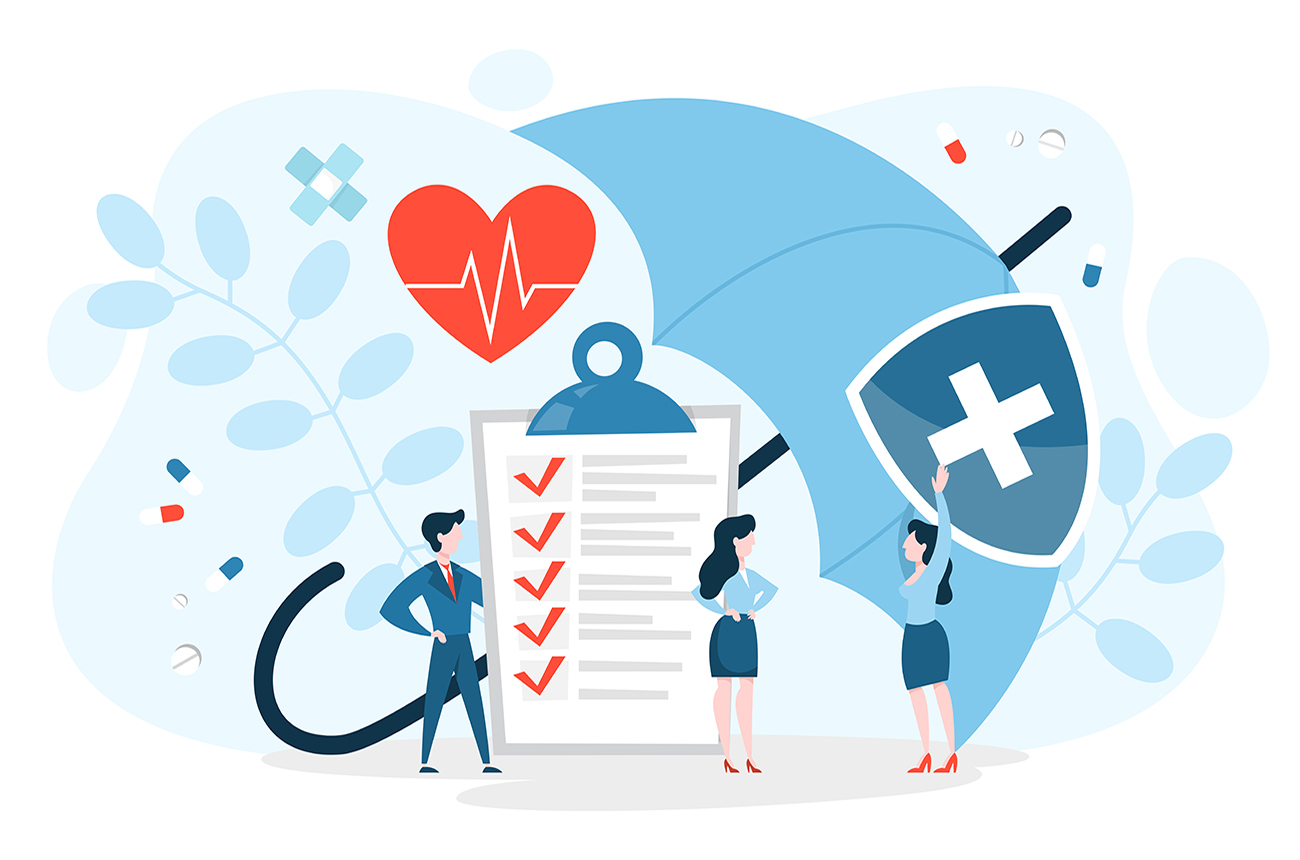
Why do you need health insurance in India?
We’re always talking about how densely populated India is but have you ever stopped to think what it means for us? Well, the metros are over-crowded for one, but there is more.
It also means more people have to share the same amount of resources. Something as basic as healthcare becomes more expensive for most.
Our country’s total expenditure on health as per WHO statistics was 4.7% of our GDP (2014). This cost is only rising due to our sedentary lifestyle and the external factors like climate that we expose ourselves to on a daily basis. As much as we love our junk food and comfortable chairs, they really aren’t helping our health.
So, at a time like this, what can one do?
This is where health insurance comes in handy, even if we faced the same health problems as the generations before us, the prices we would have to pay would be a lot more due to inflation. But a good health insurance can work as a safety net that protects you from these expenses. There are things such as family medical history, environment and even our lifestyles that aren’t completely in our control, but how prepared are we for unforeseen events are.
But besides countering the effects of our changing lifestyles and rising medical costs, health insurance also gives you some additional benefits such as tax deductions. We know, a lot of people don’t invest in health insurance because they think it’s expensive but if anything, it’s helping you save money on two fronts – medical bills and taxes. All payments made as premium for your insurance are eligible for tax deduction under section 80D of the Indian Income Tax Act. In simpler terms, the amount you pay as premium is deducted from your total taxable income.
Now you might be thinking that you are healthy, and you wouldn’t really need hospitalisation and thus, health insurance. But here’s where you are mistaken. Health insurance doesn’t just help you during hospitalisation but throughout – from getting free health check-ups to day-care treatments and even dental procedures. Now, who doesn’t need a dentist every now and then, right? Moreover, you might be healthy now, but what about 10 or 20 years down the line? You can never be sure of your health then, but you can be sure that health insurance will be there to protect your finances.
Planning for the future is a must in this day and age. The ease of technology leaves you with no excuse but to click a few buttons to secure yourself. Health insurance is cited as one of the best investments that one can make. Not only does it lead to better financial planning, but it also removes a lot of questions you may have when an unfortunate situation does arise.
Choose a plan tailored to your needs and stay assured that if you ever need healthcare, you have something to fall back on.
Though there are many Online Health Insurance Companies in India, Magma HDI is a one stop shop for all your needs from a Health Insurance Policy Renewal or getting a new policy.
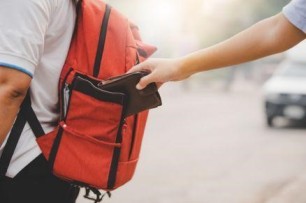
How can you outsmart pickpockets and stay safe in crowded places
Crowded places are a feast for pickpockets. They can easily pick our pockets while we move in cramped surroundings such as a busy market amidst the constant crowd nagging of people around us. Pickpockets do this so skillfully and swiftly that we are left unnoticed and outwitted. Losing our wallet can be frustrating, especially when it is loaded with important documents such as the driving licence, Aadhar card, voter id card, and even credit or debit cards. Moreover, the loss of money can be very harsh and painful for most of us.
So how can we deal with such situations? Here are some tips for outwitting pickpockets and staying safe in crowded places.
1. Move your wallet to your front pocket:
Never keep your wallet in the back pocket in crowded surroundings. Pickpockets can easily pick your back pocket, and you will hardly know it amidst the crowd. Therefore, use the front pocket of your trousers to keep your wallet. Outwit the pickpocket by keeping only those articles in the back pocket that are not very valuable.
2. Multiple wallets and pockets:
You can keep two wallets/handbags rather than just one. Keep your valuables and documents in a wallet in your front pocket or a handbag that you can keep close to you. Keep the lesser valuable products in the 2nd wallet in your back pocket. The pickpocket will be outwitted when he finds that he has taken away some useless items from your back pocket while your valuables are safe. Also, you can use multiple pockets in your bag to hide your valuables and divide your risk.
3. Do not show off:
Do not flash your expensive laptop, phone, jewellery, cash, camera, etc., in a crowded public place. Take them out only when it is necessary.
4. Lock your bags:
Carry small locks with you and lock your bag while moving in a crowded place. The pickpocket will not be able to open it in the middle of the crowd, and you will be safe.
5. Hidden pockets:
Nothing better than a hidden pocket in the front of your trousers or jeans. Pickpockets cannot reach there, no matter how much they try. Also, buy goodquality backpacks and purses with multiple hidden pockets and good build quality. The pickpocket will not be able to determine which pocket carries your valuables.
6. Disguise and hide:
Use smart hacks and disguises to outwit the pickpocket. If you need to carry valuable jewellery while going through a crowded place, hide them in your bag inside a small cardboard box. A ring can go inside a matchstick box. You can take a used burger box if you need a bigger box! Moreover, you can use a file folder to hide your laptop.
7. Carry your backpack facing the front:
While going through a crowded area or using local transport, pull the front portion of the backpack with the chain facing the front. This way, the pickpocket cannot open it from behind you.
These were some hacks you can use to outwit a pickpocket in a crowded place. Apart from these, simply go the digital way! Carry minimum possible documents with you in hard copy. Rather, carry them in soft copy format on your phone or laptop.
In case a pickpocket picks up your wallet, you lose all the important documents along with it. Do not let this happen to your bike insurance policy. Ditch those lengthy insurance papers. Buy the best bike insurance online and save yourself a fortune. You will save money on agent commissions and have a soft copy of the policy on your mobile phone. Overall, it’s a win-win situation for you and us as the insurance provider. The only loser, in this case, will be the pickpocket!
Click HERE to buy bike insurance online.
Disclaimer: The information provided above is for illustrative purposes only. To get more details, please refer to policy wordings and prospectus before purchasing a policy.

Are fibre parts covered under two wheeler insurance
Preferred amongst different economic strata, scooters and bikes help manoeuvre through tight-packed traffic and poorly maintained roads with precision. However, the lack of an effective safety system makes them a risky option, so buying the best two wheeler insurance in India is necessary to protect your two-wheeler against damages and allied losses.
While damages from accidents and maintenance costs of the 2-wheeler are covered by insurance, does the same apply to its additional fittings of glass, fibre, silicon, etc.? Read on to find out if such depreciable parts are covered by your two wheeler insurance policy.
What are depreciable parts?
With consistent use, the value of any vehicle is bound to depreciate. In two-wheelers, the primary function is served by the engine and mechanical parts. However, there are smaller parts made using relatively weaker materials, like silicon, rubber, etc., that inevitably depreciate sooner
Are depreciable parts covered under comprehensive insurance?
A third-party insurance policy is often lacking to provide coverage for depreciable parts. You may have to purchase an add-on cover for several of its excluded items, and depreciable fibre parts are one of the many partial exclusions. Generally, two wheeler insurance only partially covers the repair and replacement costs of the depreciable parts alone. Instead, they cover a marginal percentage of the expense, leaving you to shoulder the burden of the rest of the amount.
The general depreciation cost percentage.
Most two wheeler insurance applies the following depreciated cost percentages on fittings based on their material:
● Fibre: 30%
● Glass: 0%
● Nylon, Plastic, Rubber: 50%
● Battery, Tube, and Tyres: 50%
This implies that the insurer assumes the above-stated depreciation rates to affect the part and only pays the depreciated cost percentage of the repair or maintenance cost. The remaining amount is borne by the insured, which is often a significant portion of the expense.
Additionally, the vehicle’s age also determines the following approximate rate of depreciation:
● Up to 6 months: 0%
● Up to 1 year: 5%
● Up to 2 years: 10%
● Up to 3 years: 15%
● Up to 4 years: 25%
● Up to 5 years: 35%
● Up to 10 years: 40%
● Above ten years: 50%
However, an alternative is available to ensure that your insurance provider bears the expense.
Zero Depreciation Add-on Cover.
In case you have a standalone own-damage insurance or comprehensive insurance, you are eligible to purchase an add-on zero depreciation cover for your two-wheeler. By purchasing this add-on, you can claim the entire cost of repairing or replacing depreciable parts from your insurer.
Check the inclusions of policies when comparing alternatives to find the best two wheeler insurance in India that covers fibre, glass, rubber parts, etc.
Exclusions under zero depreciation add-on. Even after purchasing the add-on to the best two wheeler insurance in India, there remain some exclusions that you will have to bear, including:
● Vehicles older than five years
● Costs of over two claims during the policy period
● Machine-driven breakdown damages
● Damages due to uninsured risks
● Depreciation due to general wear and tear
When to buy zero depreciation add-on. While it is a beneficial facility, consider purchasing a zero depreciation cover if:
● You own a limited edition or premium 2-wheeler
● You live in an accident-prone area with heavy traffic
● Your vehicle is not older than five years
● The cost of individual repairs of depreciable parts is estimated to be greater than the cost of the add-on
Depreciation is an inevitable loss of asset value. Although most insurance covers do not provide for expenses relating to depreciable parts, an add-on zero depreciation cover can convert your preferred insurance into the best two wheeler insurance in India.
Click HERE to buy the best two wheeler insurance in India.
Disclaimer: The information provided above is for illustrative purposes only. To get more details, please refer to policy wordings and prospectus before purchasing a policy.

How to deal with motorcycle wobble when riding at high speeds
Research states that over one third of vehicles on the road are motorcycles. Found to be cost-effective, easy to ride, and convenient, motorcycles are used extensively in rural and urban areas. They can tackle rough roads and get you to your destination while skillfully getting you out of traffic.
While motorcycles have a significant user base in India, they also have their fair share of problems. The lack of safety is a primary concern with these vehicles. Riding at high speeds on under-maintained roads in a country where traffic rules are not strictly followed has resulted in hundreds of road accidents daily.
This alarming information should be enough to prompt you to purchase online motor insurance if you do not have one already. It is necessary to have insurance to cover any possible losses from damages to you, your vehicle, and third-party property.
While online motor insurance can protect your post-accident damages, here's a quick guide to prevent and tackle motorcycle wobbling when riding at high speeds.
What causes motor cycling wobbling?
Your motorcycle can wobble due to many reasons, even when not at high speed.
1. Defective tyres – Ensure you evaluate the tyres' pressure and build before taking your motorcycle for a ride.
2. Worn equipment – Motorcycles used at the wrong tyre pressures or overused bearings that are worn out are potential causes for wobbling. You must check the parts of your motorcycle and ensure that they are in perfect condition to facilitate long-running and prevent mishaps.
3. Irregular road surface – A sudden change in the road surface in the form of an irregularity such as a pothole while in acceleration is likely to cause your handlebar to shake.
4. Rapid acceleration – If you consecutively accelerate the bike, it cannot keep up with the rapidly changing speed and may wobble violently.
5. Instant slowing – You may also experience shimmying while decelerating from a high speed. This is caused due to the instantaneous changes in speed.
What you shouldn't do when your handlebar wobbles?
If you feel a slight shimmy and are sure it is not due to any motorcycle defect, do not grip harder onto the bar to stabilise it. Continue holding on in the same way and allow it to adjust to the surface. Do not let your eyes stay on the road beneath. Instead, look straight and assess the road ahead and the vehicles around to keep yourself at a safe distance from others.
Tips to ease out the wobble safely:
Assessing the situation is key in such a situation. If it is a well-maintained motorcycle on an irregular patch of road, do not worry. Do not tighten your grip on the handle and allow your bike to balance itself on the surface. The wobble, in this case, would be slight and can be easily overcome by the motorcycle in a few seconds.
If it is a motorcycle issue, the wobble will be much stronger. In such a case, here are some tips for riding out the wobble:
1. Slowly engage the rear brakes – At no cost should you use the front brakes, which will cause an accident. With applying rear brakes, your bike may wobble more at first, but it will slow down.
2. Lean forward – While it may not solve the problem alone, it increases resistance and may help slow down your bike.
These are the only ways to slow down your vehicle. Assess your possible options based on the road ahead. If there is a greater obstacle that your motorcycle is bound to crash into, it is best to abandon the vehicle. Your online motor insurance can cover any damages to your bike. However, if the road ahead is straight, keep your calm and engage the rear brakes slowly. You will eventually be able to decelerate and get out of the wobble and regain control.
While bikes are convenient vehicles, we strongly recommend riding motorcycles at acceptable speeds where you can easily control them to prevent mishaps. Online motor insurance is a must that can prevent any potential financial burden and have your back during emergencies.
Click HERE to buy an online motor insurance policy for your motorcycle.
Disclaimer: The information provided above is for illustrative purposes only. To get more details, please refer to policy wordings and prospectus before purchasing a policy.
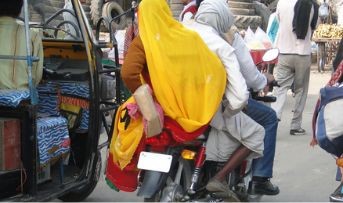
Challenges faced by Indian female pillion riders due to side-saddle posture
There are several issues raised when women pillion riders sit in a side-saddle position. Balance is the primary safety concern, amongst others. A significant safety hazard might arise from this posture. The pillion rider must be seated with the two-wheeler balanced between their legs and then place one hand over the driver's shoulder while holding onto the seat with the other.
Side saddling, more often than not, is an unpleasant experience. However, women are inclined towards this positioning because of their choice of clothes or because they feel like they are more in command of their bodies in case of an accident or a crash.
This is an added hassle for long trips and can be dangerous for the following reasons:
● The probability of an accident increases when a female rider moves around and repositions herself.
● Road traffic injury rates increase because of the fall of pillion riders in side-saddle posture.
● Frequently travelling in this position can give rise to severe back and shoulder pains.
● There are numerous ways that rainy weather might cause two-wheeler crashes.
How side-saddle posture affects women?
● With less space for your foot, side saddling can cause muscle soreness and uneasiness.
● Female passengers sitting side-saddle, in particular, typically lack backrests, which causes back and shoulder strain when riding for prolonged periods.
Problems faced:
● The pillion rider cannot equally distribute their body weight across both sides of the two-wheeler. At the same time, in a side-saddle position, the tiniest movements can cause a disbalance, create discomfort to the rider, and may also lead to an accident.
● Women riding as pillion in traditional attire are required to grasp the loose ends of their attire or sit on the loose ends. Both alternatives still provide sufficient space for the clothing to become tangled up in the two-wheeler.
● It is typical for ladies wearing traditional clothing to ride side-saddle because none of the clothing options—saree or skirt—allows for discreet or comfortable seating.
● Additionally, when a piece of long dress fabric gets trapped in a tyre, it increases the probability of various collisions. The two-wheeler will come to a complete stop. As a result, it possibly throws both the driver and the passenger off. The road in front of the pillion riders is only partially visible to them.
A two-wheeler has many advantages, particularly in terms of time savings. More and more people are choosing to travel by two-wheeler, particularly in cities where traffic and congestion are major issues.
However, two-wheelers make up the majority of traffic accidents in India. It increases the possibility of injury to the driver and pillion rider or damage to the two-wheeler. This may result in increased financial distress. That's why it's very important to buy a two wheeler insurance India policy.
It is advisable to avoid travelling in a side-saddle posture, but if it is necessary, then you must take all the precautions needed for a safe ride. Always ensure that you prioritise safety and accordingly use safety measures like a helmet, knee guards, etc., to reduce the impact of accidents if you meet one while riding.
Click HERE to buy two wheeler insurance India policy.
Disclaimer: The information provided above is for illustrative purposes only. To get more details, please refer to policy wordings and prospectus before purchasing a policy.

The best ways to treat shoulder dislocation and prevent it in future
Accidents are a common occurrence these days. They can cause major upheaval and disrupt our entire life at once. Not only does an accident cause financial damage, but it also builds a lot of anxiety, stress, and fear among individuals.
A lot can happen when an accident strikes, whether physical harm or mental discomfort. From road accidents to mishaps at workplaces or homes, unfortunate events can take place anywhere. You need to be cautious and take all the necessary precautions to protect yourself and avoid injuries. In addition, securing yourself with suitable personal accident insurance plans is crucial to prevent financial chaos after such incidents.
A shoulder dislocation is one of the major and most common accidental injuries. It can result from injury due to playing, road accidents, or slipping in the bathroom. Whenever a large blow is delivered to your shoulder, it can result in dislocation.
How do you treat a shoulder dislocation and take care after the injury? Let's find out!
What are the symptoms of shoulder dislocation?
Shoulder dislocation results from heavy damage to the shoulder joint due to the high-intensity impact after an accident. These are a few symptoms to diagnose dislocation:
● Swelling
● Severe pain
● Numbness of arm
● Redness
● Bruising
● Tingling sensation
● Visibly out of place shoulder
How is shoulder dislocation diagnosed?
If you notice the above symptoms, always seek immediate medical help. A doctor diagnoses the condition by asking relevant questions about the symptoms you are experiencing. If it correlates with shoulder dislocation, it is diagnosed accordingly. Muscle relaxers are then administered immediately to the patients to reduce pain.
Once the patient is stable, an MRI or CT scan is undertaken. It helps in revealing any broken bones in the body. Sometimes a dislocation can be diagnosed by simply touching.
How to treat shoulder dislocation?
A shoulder dislocation does not require any surgery. Your doctor can easily diagnose it. It will then be carefully put back in its place to heal. The treatment requires:
● Use of pain medication to ease the pain and discomfort caused by the dislocation. If the pain is severe, a numbing agent can be used to provide relief.
● The shoulder is carefully put back into its designed place by your doctor. It stops severe pain immediately.
● A splint or sling is to be worn for 7-10 days for proper healing of the joint.
● The doctor recommends icing the shoulder every day at least 3-4 times.
● After healing the joint, you need to go to a physiotherapist who will provide you with light exercises for the proper functioning of the joint after injury.
How to prevent shoulder dislocation in the future?
Shoulder dislocation usually occurs while playing sports or an accidental fall. It is advised to wear protective gear while playing any kind of sport to avoid an injury later.
A small mistake today can lead to bigger problems tomorrow. An injury to any body part can cause long-term problems in the future. The shoulder is an important body part that should be protected at all costs. Regardless of everything, you should know about personal accident insurance plans in advance to avoid exhausting your money on treatments and medications.
Click HERE to know more about personal accident insurance plans.
Disclaimer: The information provided above is for illustrative purposes only. To get more details, please refer to policy wordings and prospectus before purchasing a policy.

Here's how you can deal with pigmentation to get a glowing look and be occasion ready
The festive season is just around the corner! With dresses and outfits being shopped, everyone is excited for the busy times of the year, whether it is a festival or family celebrations. With all this preparation, one must not neglect their skincare.
From the harsh sun rays to constant dust, our skin goes through significant damage daily. All these factors eventually lead to pigmentation. Many people get deeply insecure about spots and areas of the skin that are pigmented. This holiday season, put your best foot forward in skincare and glow with pride!
This blog gives you some tips for dealing with pigmentation and being occasion-ready!
Chemical methods:
It has been a long-held Indian belief that anything chemical harms the skin. While that may be true in certain situations, if used correctly and in the right quantity, these products can give an instantly brighter look to your skin so that you look flawless on any occasion.
1. Exfoliate:
With the daily pollution and sun exposure, it's no wonder our skin looks dull and dreary. The main reason for dull, pigmented skin is this layer of dust and dead skin cells that develop under the skin. Scrubbing and exfoliating is a great way to eliminate this layer and give you glowing, spotless skin. However, get a scrub for your skin type to avoid further damage.
2. Extraction and hydration:
A small, vacuum-like product has recently been available on the shelves of cosmetic stores and has revolutionised extraction. Gently massage your skin with this vacuum to clear all debris and remove all the whiteheads and blackheads from deep within your pores. Use intense moisturisers after this process to retain the skin's natural hydration, and watch how it rewards you with a brighter look.
3. Vitamin C:
Did you know that vitamin C is the key to glowing skin? Fruits like lemons, citrus, strawberries, and blueberries will lead your way to good skin and deal organically with pigmentation. These fruits have an abundance of antioxidants, adding an instant radiant shine to your skin.
4. Sunscreen:
The primary reason for pigmentation is sun exposure. The sun emits harmful UV rays that kill skin cells and causes those dark spots. Liberally apply sunscreen each time you leave the house to have healthier skin in the long term.
Now let's look at a few home remedies to get visible results naturally:
Although artificial methods can help to a large extent to improve your skin, there's nothing that beats lifestyle changes for long-lasting clear, and glowing skin.
1. A good sleep:
The body heals and repairs itself when you get your 08 hours of sleep each night. Often, we overestimate our body's ability to stay awake and pull several all-nighters. This leaves the skin feeling dull and rough. On the other hand, when you're well rested, there's a visible glow on your face that comes from the collagen production and blood flow while you sleep. So, kick back, relax and get your beauty sleep, especially before going for a function!
2. Shorter showers:
A long, warm shower is relaxing to the body and mind, but it has the opposite effect on the skin. It strips the skin of the natural oils produced and can leave your skin dry. The best kind of shower for the skin is a cold or lukewarm one that lasts about 10-12 mins.
3. Honey and saffron:
This combination is the best for hydrating your skin, leaving it feeling soft and fluffy
Take adequate rest, bring discipline to your eating habits, and wash your face regularly, especially after coming home from outside. The good health of your stomach also plays a vital role in maintaining the freshness of your skin.
Your skin greatly depends on your lifestyle and how you maintain your inner health. Have regular full-body check-ups to improve your overall health. Research the best online health insurance for optimum protection and be assured of the expenses involved. Your skin is your personal outfit, and keeping it shining is paramount to having a confident look and being occasion-ready.
Click HERE to know more about online health insurance.
Disclaimer: The information provided above is for illustrative purposes only. To get more details, please refer to policy wordings and prospectus before purchasing a policy.

Were you aware of the health benefits of riding motorcycles
Riding a motorcycle is one of the most ethereal experiences that you can encounter in your life. Be it a crowded market or the lush green valleys of the Himalayas, a bike ride is perfect for every occasion. The thrill, excitement, and adrenaline rush that a bike ride gives you will always be unmatched.
But did you know that riding a bike can have health benefits besides getting an adrenaline boost? Surprised, aren't you? Let's find out the different health benefits you can have from riding motorcycles.
1. Builds core strength:
Whenever you ride a bike, you need to maintain the correct position. For longer bike rides, the body's posture must be maintained. It ultimately contributes to greater core strength and flexibility.
You must work on your core to stay upright on your ride. Your body posture maintains the correct shape and form while riding a bike. It is a great exercise for you.
2. Strengthens thigh muscles:
This is one of the hidden benefits of riding a motorcycle. If you're experiencing any issue with your knees or thighs, it can easily be resolved by riding a motorcycle. When you ride a motorcycle, you need to apply a lot of strength on your knees and thighs without straining them too much. A little movement can do them well. Riding a motorcycle is no less than a physical exercise that your legs necessarily need.
3. Boosts neck strength:
If you spend a lot of time on your phone or laptop, you will likely develop neck problems and a painful strain in due time. The best way to tackle it can be by riding a motorcycle. It helps in boosting your neck strength and eliminates the risk of developing a strain or cramp there.
4. Burns calories:
When you ride a motorcycle, you burn calories. When you are in the driver's seat of a motorcycle, you are likely to put in a lot of effort in riding the bike. Your entire body is in an active state with your senses alert, which demands more energy to maintain coordination. This can aid in burning calories. You can burn up to 50 calories by simply riding a bike. This is not possible in the case of other vehicles.
5. Boosts mood:
Although there are numerous benefits of riding a motorcycle, it also greatly impacts your mental health. It boosts your mood and uplifts you. You can cheer yourself up and feel relaxed by setting out on a fulfilling bike ride. It stimulates the happy hormones in your body. It is great for people who are suffering from depression or anxiety. It is an effective way to lift your mood and make you feel better.
These are the numerous health benefits of riding a motorcycle. It not only helps build your physical health but also positively affects your mental health. Apart from the convenience of commuting, it is also important in staying motivated and in the pink of health. If bike riding is your comfort, securing it should be your responsibility. You should buy bike insurance in advance regardless of where you ride your motorcycle. It will add a financial safety net to cover the hefty expenses of damages to your bike.
So, invest in comprehensive bike insurance and enjoy multiple benefits at an attractive premium.
Click HERE to purchase the best bike insurance.
Disclaimer: The information provided above is for illustrative purposes only. To get more details, please refer to policy wordings and prospectus before purchasing a policy.
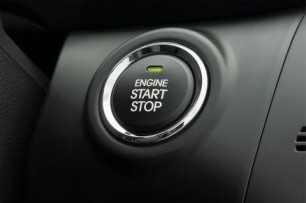
Here’s all you need to know about keyless ignition and its importance in cars
A keyless ignition system is an electronic access system that allows us to enter the car and start/stop it without the physical metal key. It is operated through a device known as the key fob or the smart key. The car verifies the key electronically and gives access to the driver.
Keyless ignition was introduced in the 1990s. It was a special feature in high-end cars until a few years ago. Now it is gaining popularity and can be found in the standard variants of several cars.
Let us go through the keyless ignition system in detail and the facts we need to know about it.
How does it work?
A keyless ignition system works through a key fob which is a radio transponder. It sends a radio signal to the car, signaling it to unlock the doors and give access to the car. We can then start or stop the car by pushing a button or turning a switch. The system also acts as an immobilizer to protect your car from thieves. The system works if you are within the car's range, usually 10-15 feet. A corresponding RFID chip in the car identifies the correct key fob electronically and gives access.
What is the importance of keyless ignition?
1. Convenience:
The foremost importance of keyless ignition is the convenience that it provides. Every driver would love to walk to his car and access it without fumbling for keys in his pockets. Your car will start and stop with the push of a button, and you no longer need to turn the metallic key or face an unpleasant ignition experience.
2. Style:
The key fob is a symbol of style and elegance. You don't need to take out the car keys to enter the car.
3. Security:
The keyless ignition system provides security to your car. Thieves cannot open the car and start it as you cannot do it without having the key fob with you.
What are the disadvantages of keyless ignition?
1. Chances of malfunction:
A keyless ignition system is eventually an electrical system that can sometimes fail. If your car battery dies, the system will not work, and you will get stuck.
2. Expensive to repair:
If your key fob gets lost or stops working, the service or changing the components is costly and time-consuming.
3. Risky:
The system can be risky as kids can easily switch on your car if you leave the key fob inside the car and go away, even for a minute. Moreover, there is a high risk of a person leaving the engine running and walking away when he forgets to push the "stop" switch. Your car engine will keep running until it runs out of fuel.
We cannot deny that the keyless ignition system is a fad we all love. It can be very convenient and useful if we use it carefully and keep constant track of where our key fob is. Always watch your car if you are moving out but are still in the radius. Your car's safety is your responsibility, and a car insurance policy provides us with similar safety and convenience as a keyless ignition system.
Gone are the days when you had to run behind an agent to get the car insurance policy of your wish. You need to go online, choose the best policy from a variety of available options, fill out the required details and buy car insurance policy online!
Click HERE to buy car insurance policy online.
Disclaimer: The information provided above is for illustrative purposes only. To get more details, please refer to policy wordings and prospectus before purchasing a policy.

Best motorcycle tips for female riders to have a safe ride
Riding a motorcycle into the sunset, with the wind blowing on your face, is one of the most surreal experiences to cherish. Previously, this arena was predominantly occupied by men, but nowadays, more women are drawn to the pleasure of riding. However, riding a motorcycle is dangerous for both genders unless the proper measures are considered. Statistics show that motorcyclists face almost 30 times the risk of an accident being fatal than one driving a car.
To have a safe and fruitful experience in driving a bike, here are some tips that female riders should keep in mind:
1. Check your comfort level with the bike:
Female riders must find a bike best suited to them. Many factors must be considered, such as seat height, bike weight, etc. You should be able to comfortably put both feet on the ground while seated and must be able to pick up the bike if it accidentally falls. Make a list of bikes to compare, and research every single one to find your perfect match.
2. Dress appropriately:
Dressing for occasions is very important, but so is dressing appropriately for biking. It is important to remember that every bit of skin exposed might get significantly hurt during an accident. Leather jackets and pants are the preferred outfits when biking and will help face any abrasions. Gloves and boots are other accessories that help a great deal. However, the most essential gear a biker needs is a helmet, preferably a full-face one. If you prefer to wear a half-face helmet, be sure to wear goggles and a face mask.
And, if you are commuting in your Indian attire, you must be careful that it doesn’t mess with your motorcycle’s tyre while in motion.
3. Prevent hair from coming onto your face:
Long hair becomes a hassle for motorbike riders. If it is kept loose and untied, it will move around, causing a distraction to the rider. Also, it might come onto your face, reducing your visibility, and becoming a safety hazard.
Although it’s an excellent alternative to tying your hair in a pony or a bun, this might get uncomfortable under a helmet. The best solution is a low braid, which will give comfort and prevent your hair from getting jostled around and messy.
4. Maintenance is key:
Learning to do basic maintenance is one of the key duties of every motorcycle rider. Learning how to change oil, lube up certain bike parts, or check the tyre pressure regularly are just a few. These skills can be picked up easily by using the internet or simply picking up an owner’s manual.
5. Keep your driving licence and insurance up to date:
A driving licence is necessary for any rider, male or female, before riding the bike. You can apply for a learner’s licence, take the test, and then get the permanent licence issued under your name.
2 wheeler insurance is an essential document to keep handy with you all the time. With the ever-increasing road accidents, it is advisable to keep your motorcycle protected by reliable 2 wheeler insurance against theft, damage, and other concerns that might vent your pockets.
There is always a risk involved in riding a vehicle on the road, regardless of what gender you are. It can only be reduced with abundant experience and remaining cognizant of the road. With an increase in the ratio of female riders, there is a significant boost in the confidence of women who aspire to own and ride a motorcycle. And with proper training and regular riding practice, this can be possible. You must ensure your safety, follow all the traffic rules, keep your 2 wheeler insurance up-to-date, and ride confidently. Happy riding!
Click HERE to know more about 2 wheeler insurance.
Disclaimer: The information provided above is for illustrative purposes only. To get more details, please refer to policy wordings and prospectus before purchasing a policy.
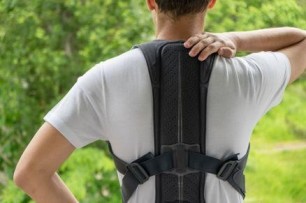
Here are a few safety tips for driving carefully post-surgery
Surgery or an operation is a significant event in one’s life. It affects the quality of the person’s life during recovery and may even alter the rest of their life. The intensity with which you might have been doing your activities might get dampened due to the aftereffects of surgery. You must be very careful while performing your daily chores and adapt to a more disciplined behaviour to emphasise aftercare and avoid severe complications.
While medical professionals take utmost care during the procedure to limit the damage and help the patient recover, it is up to the person to rest and allow their body to recover completely. However, surgery cannot put a person’s life on hold. Several responsibilities and duties need to be fulfilled in one’s day-to-day life.
Driving is one such activity that makes life convenient but can get difficult post-surgery. This article discusses some safety tips to keep you safe while driving post-operation.
1. Avoid driving until 48 hours post-operation:
The effects of anaesthesia or any other drug administered during the procedure may still affect your senses and cloud your judgement. It is best to avoid getting behind the wheel at least two days after the surgery. Having friends or family drive you back home or hail a cab is advised.
2. Consult your doctor:
Only your doctors can give you accurate estimates of when you will be able to recover. While it is advised to wait until the entire advised rest period is over, you can consult your doctor to find the best time to get back to driving. Only drive after getting your doctor’s approval. Till then, continue to indulge yourself in mild exercises and stretches.
3. Check your range of mobility:
Drivers need to have a full range of motion and vision. If your mobility is restricted or vision is impaired, you are not fit to drive and are putting yourself and others at risk. Do not drive under either of the circumstances mentioned above.
4. Have a licence-holding passenger accompany you:
It is better to have a passenger with a driving licence issued by the Government beside you even after the doctor deems you fit to drive. In case of any difficulties, the passenger can take control of the vehicle, and drive you safely to your destination.
5. Go for short drives:
Let the first few drives mimic the driving lessons you took as a beginner. Keep the distance short and focus on the basics- lane driving, assessing your position on the road, and checking your reflexes. While it may be frustrating, it will keep you safe and help you get accustomed to driving post-operation. Take this as a challenge to make a swift comeback to your regular driving regime.
Why your insurance may not cover your driving accidents post-surgery:
A personal accident insurance policy is undoubtedly helpful in covering medical and allied costs. However, it may not cover accidents immediately after a medical operation. Since an accident caused due to pain or impairment due to the surgery is a known cause, it becomes the insured’s responsibility to pay for the medical costs incurred for the treatment. Medicinal intoxication is usually covered under a personal accident insurance policy, but pre-existing injuries are exempted from insurance coverage.
*Note: Verify all the inclusions and exclusions with your insurance provider for a better understanding.
While a personal accident insurance policy does not cover already existing injuries, we strongly recommend purchasing it to cover unforeseen accidents and thoroughly check the conditions to protect yourself.
Just as you ensure your wellbeing, it is equally crucial to insure your car against accidental damages. Invest in a reliable car insurance plan, or never miss out on your car insurance renewal if you already own one. Lastly, do not give up on your hopes. Stay positive and relentlessly practice healthy habits for a speedy recovery. You don’t have to surrender your passion for driving. Follow the above tips and make a comeback taking one step at a time.
Click HERE for hassle-free car insurance renewal.
Disclaimer: The information provided above is for illustrative purposes only. To get more details, please refer to policy wordings and prospectus before purchasing a policy.
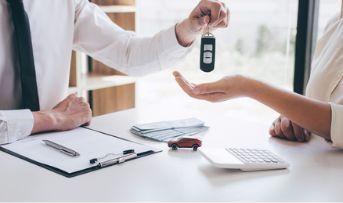
Understand these smart tactics that car salespeople won't want you to know
Buying a car is more challenging than it seems. The salesperson uses many tactics to prevent their buyers or sellers from negotiating. Usually, buyers who lack detailed information about car sales and the buying process fall victim to these tricks the salesperson uses to draw more profit.
You also have to consider various things, such as auto loans, RC transfers, and hidden charges, when estimating the price of the car. So, you can create your strategy against these persuasive tricks and get your choice of car at a reasonable price. Here are some tactics that are commonly used to influence the customer.
1. Psychological profiling:
The car salespeople use the scripted questions to break down the needs and vulnerabilities of potential customers. These salespeople are experts in persuading people. The first question most car salespeople ask is about your budget. If you answer this question, you will show a vulnerability to car salespeople.
You should refrain from discussing your budget, family needs, vanity, and urgency to buy and ask for a test drive before signing papers. If you find a car you want, negotiate the price and leave trade-ins and add-ons for another discussion.
2. The Ben Franklin close tactic:
Most car salespeople use this classic tactic to fool the customer into buying a specific car. In this method, they draw a line down the middle of a piece of paper and list the reasons to buy or not buy the particular car. The information from the salesperson is either half true or false. You should avoid falling for this trap and becoming a victim of their motive.
3. The Porcupine close tactic:
The car salespeople use another tactic that includes a question starting with "if." For example, "If I can get you this monthly payment, will you be willing to buy this car today?" Car salespeople use this strategy to find a buying trigger in their customers.
When your car salesperson asks you this type of question, you should answer it with a negative. Instead, telling your car salesperson that you are negotiating with other dealers to get the best deal.
4. The waiting game:
When you go to your car salesperson to buy a car, there are salespeople, a team leader, a general manager, and more levels of leadership. They waste your time and trick you into selling what they want. If your car dealer takes too long to start moving the deal, you should call the deal off.
5. Look after the overall cost of the car:
People research the price of the car and divide the numbers into a down payment and a monthly payment. Most car dealers offer you monthly payments. You should ask them about the total price of the car and their best offer.
You can use an online car affordability calculator to check how expensive a car you can afford. Stay in the range and consider other things such as dealer fees, car insurance, and more. Choose the best car insurance company in India to get reliable insurance at the right price.
6. The impending event tactic:
Car salespeople use another tactic to sell their cars without negotiating. In this tactic, the car salesperson says that you need to buy this car today to take advantage of a big opportunity to buy it, or some other customer will get it.
You should refrain from showing any urgency and telling the car dealer in their eyes that if you come back tomorrow, they will not sell you this car.
These were a few ways to smartly deal with the tactics of salespeople and outwit them. Always stay alert while making such big decisions. Rely more on your research, compare different brands and categories, and take a test drive before the final purchase.
It is compulsory for people who buy a new or used car to get car insurance. When you find a strategy against the car salespeople's tactics, you should also look for the best car insurance company in India. Car insurance brings you many benefits, including personal accident cover, no claim benefits, damage or loss to insure a car, and third-party liabilities. Buy one today to make your driving experience safe and convenient.
Click HERE to buy insurance from the best car insurance company in India.
Disclaimer: The information provided above is for illustrative purposes only. To get more details, please refer to policy wordings and prospectus before purchasing a policy.
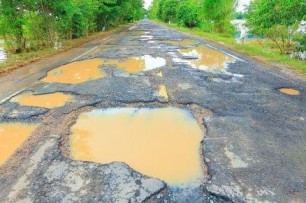
Here are a few potholes survival tips while riding a bike during monsoon
Due to heavy downpours every year, the Indian roads are severely hit and damaged. The potholes and cracks make the roads less motorable, and vehicles have to find their way safely by tackling them.
Potholes are dangerous for driving during the monsoon and rainy seasons, especially for bikers. Alongside this, the extra danger of your bike's wheels slipping on roads adds to the stress of accident possibilities.
Riders must exercise extra caution for a safe ride during the monsoon season. If you drive a two-wheeler in the rain, you should keep the following points in mind.
1. Do not disregard tyre health:
Before riding a bike or scooter in the rain, remember to check the tyres. Your bike might easily skid on the road if the traction in its tyres is worn down. Therefore, change the tyre right away.
2. Attentiveness:
Riding safely in the weather largely depends on being aware of your surroundings. Keep an eye out for potholes and puddles since they can be deeper and bigger than you expected, or there might be an open manhole beneath the water. Stay away from slicks of oil on the road that can be very slippery.
3. Slow down:
Speeding your two-wheeler is strictly prohibited when it rains because it affects your ability to see through and impairs your vision. In addition to the poor vision caused by rain, driving slowly will also give you better control and allow you to brake effectively in an emergency. Your scooter or bike may skid if you apply the brakes suddenly. Potholes are frequently obscured by water and are difficult to see. Take complete judgement of the road and maintain a steady speed to get enough time to tackle the potholes without losing balance.
4. Keep a safe distance:
Keep a safe gap between your two-wheeler and other vehicles on the road, whether in front of you, behind you, or even on the sides. You run the risk of hitting other vehicles when your vision is poor.
5. Using brakes correctly:
When it's raining, it's usually preferable to use the back brake so that your bike stops gradually rather than abruptly. Avoid applying sudden brakes as it might make the vehicle behind ram into you.
6. Stay off flooded roads:
In addition to causing you to veer into potholes, water exposure can harm your scooter or bike's exhaust.
Riding gear –
Investing in good waterproof riding gear can keep you dry. Your riding gear will protect you in an accident. These gears are
● Waterproof riding jacket: Invest in a waterproof riding jacket. To ensure that other road users see you, ensure the jacket has adequate reflective stripes.
● Waterproof riding pants: Wear waterproof riding pants to protect your lower body from the water.
● Gloves: Waterproof riding gloves keep your hands safe and grip tight on the handlebar.
● Helmet: Purchase a full-face helmet with a transparent visor. Immediately replace the scratched visor. To increase visibility, apply reflective tape to the front and back of the helmet.
The water puddles well conceal potholes. The bike's rapid movement and imbalance from riding over these puddles could cause you to lose traction. No matter how skilled a rider you are, a lack of traction and visibility can significantly damage your bike and cause you injuries.
Another crucial safety measure is an insurance. It is preferred to have robust bike insurance to protect your asset from unfortunate damages and repair and maintenance costs. A bike insurance equips you to deal with any accident on the road.
Keep a safe distance from other vehicles when you are riding. Look out for potholes and avoid over speeding your bike. Always remember to accelerate gradually and brake gently to prevent any jerky movement, and never miss having bike insurance.
Click HERE to buy the best bike insurance policy.
Disclaimer: The information provided above is for illustrative purposes only. To get more details, please refer to policy wordings and prospectus before purchasing a policy.

Why using a fancy number plate for your car can get you into trouble
Have you bought a brand-new car and are excited to hit the road? The first thing that the law requires is that you need a number plate on the front and rear to display the vehicle registration number. So many of us would love to go for a fancy number plate that makes our car look unique and cool.
But wait. Are you aware you can get into trouble using a fancy number plate for your car? Let us see how.
1. Fines:
According to the Central Motor Vehicles Rules, 1989, you must follow a specific format for your car’s number plate. It specifies the size of the number plate for light motor vehicles and passenger vehicles, respectively. It also specifies the font height and width to be used and the spacing between every font or number. It then specifies the colour combination according to your vehicle category.
A fancy number plate will usually violate one or more of the above guidelines. People go for fancy fonts and colour combinations, write the number to resemble some word or name, or change the size to make it look unique. In any of these cases, the traffic police can issue a challan and impose a penalty on you.
According to section 192(1) of the Motor Vehicles Act, fancy and improper number plates can be fined up to INR 5000. However, this penalty varies from one state to another.
2. Cancellation of licence:
Using a fancy number plate that does not conform to the law is considered illegal in India. Some states have a provision for cancelling the licences of repeat offenders who do not get their number plate changed according to the allowed format despite repeated challans and warnings.
3. Vehicle seizure and imprisonment:
If you choose to delete a number or two in the quest to make your number plate extra fancy, the police have the authority to seize your vehicle and register a criminal case against you. This can lead to your imprisonment as well.
4. Insurance claim:
A fancy number plate can indirectly impact the settlement of your car insurance claim, too, in the event of an accident. If the police have suspended your licence due to the faulty fancy number plate and you meet with an accident in your car, you cannot raise an insurance claim. This can result in heavy monetary loss to you if the accident is major.
Security concerns with fancy number plates:
Fancy number plates usually have fancy fonts that cannot be read easily. This can be troublesome for authorities to trace you or your car in case of theft, traffic violation, or even an accident. If the law starts permitting fancy number plates, criminals will start using this to their advantage.
It is natural that you would want a personalised fancy number plate after buying an expensive car. It will be your style statement and make your car look cooler. However, as mentioned above, a fancy number plate can get you in trouble.
So, stay out of it and make your life simpler by using a number plate that is permitted by law. Online motor insurance is another way by which you can make your life simpler and hassle-free. It has all the advantages of an offline policy and provides you the ease and convenience of choice, comparison, and quick claim settlement, all from the comfort of your home or office.
Click HERE to buy online motor insurance to protect your car against damages.
Disclaimer: The information provided above is for illustrative purposes only. To get more details, please refer to policy wordings and prospectus before purchasing a policy.
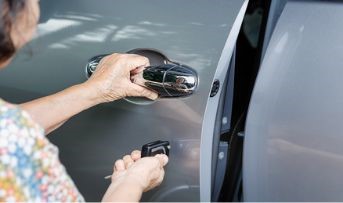
Which type of car alarm is right for your car
Even in a country like India, where unequal wealth distribution has persisted over the years, the demand for luxury goods has risen across different landscapes. While rural settings used to limit their investments to affordable luxuries such as 2-wheelers, that is no longer the case. Although comparatively small, the number of car owners in rural and semi-urban areas is growing.
As more people purchase cars, one cannot ignore their allied risks. The risk of damage and theft are the highest-ranking troubles of Indian car owners. While you can cover damages by buying the best car insurance in India, multiple systems can help prevent theft, but none to eliminate it. Owners are left with no choice but to protect their vehicles with the most-sophisticated systems that can deter burglary.
While a basic alarm system is installed in all cars, an aftermarket security system doubles the protection. The availability of too many choices makes it difficult to find the best option for your vehicle. Here is a list of all the types of car alarms to help you choose the best-suited system for your vehicle.
1. Audible alarm system:
Starting with the most basic anti-theft mechanism, a blaring alarm is usually provided in most cars. It makes for easy identification of an issue and alerts passersby to intervene. However, it is an outdated feature, considering that thieves have started tampering with cars to raise the alarm to divert people’s attention from the sound of breaking windows to steal the items inside the vehicle. While necessary, it is not a comprehensive solution.
2. Silent alarms:
A silent alarm does precisely what an audible alarm does- but inaudibly, and only alerts the owner who has the key. Being inaudible can be considered a boon or a bane depending on the result of the situation. Since owners are warned without a sound, the thief remains oblivious to being discovered. As there is no sound, nobody but the owner would be aware of the incident, leaving it entirely up to the owner to tackle the situation.
3. Immobilising alarm system:
The best option of the alternatives discussed so far is an immobilising system. Once the car detects a potential thief at work, it automatically locks the vehicle. The owner does not need to intervene since there is no risk of displacement.
However, in most cases, thieves look for valuable items in the car to steal rather than stealing the vehicle itself, making the system useless in such cases. Alternatively, a key is required to unlock the car, which is not difficult to attain considering the instances of petty thievery and copying the key itself or its electronic signal that opens the car.
4. Additional GPS tracking:
While GPS is a commonly used feature while driving, it can also help keep your car safe if you keep it on even when locked. This way, irrespective of the car alarm system, you will always have access to the car’s location and can track it down in emergencies.
Our recommendation:
1. Why stick to one when you can double up and be extra sure? We recommend adding multiple systems simultaneously to keep your car safe. While you can choose between audible and noiseless alarms, we urge you to purchase at least one of the above-mentioned systems.
2. Consider activating passive security systems rather than active ones. In the case of active alarms, you must trigger them each time after locking the doors, which is often forgotten. However, passive systems work without an additional push. While identifying the best car insurance in India, read the fine print to see if a specific type of alarm is required to be installed to cover robbery incidents.
3. Let the professionals at a registered service provider install your add-on security system to ensure proper activation.
Apart from your choice of alarm system, a vigilant watch, a safe neighbourhood, and buying the best car insurance in India are other crucial factors to keep your car safe from thieves and get compensated for the damage or loss due to acts of robbery.
Click HERE to buy the best car insurance in India.
Disclaimer: The information provided above is for illustrative purposes only. To get more details, please refer to policy wordings and prospectus before purchasing a policy.

Here are a few possible reasons for highway accidents in India that you should know
India is home to over 1.35 billion people, and most of them commute daily through highways and city streets. But we have been ignorant for a long time now regarding the condition of the roads, especially during bad weather conditions. It's time for a change! And before you ask why we'll take you through some stats that will make you think twice.
There is a saying, "A single death is a tragedy; a million deaths is a statistic." On average, over four hundred thousand road accidents occur annually in India, which means that every two minutes, a road accident occurs in our country.
It is imperative to have good knowledge of motor insurance to ensure your car's safety. In case of accidents, motor insurance acts like a financial cushion. The policy significantly reduces policyholders' losses and saves the party from legal repercussions.
For a safe drive, one should be aware of the risks associated with driving on highways and try to avoid them.
Buckle up your seat belts as we take you through a few possible reasons for highway accidents in India. The next time you hit the roads, we ensure that you know the potential risk factors and prioritise your safety.
1. Over speeding:
While you are young, it can be thrilling to over-speed when travelling on highways. But remember, no matter how empty the roads might be, overspeeding is always a killer. It can't be more true when elders say patience is a virtue. So, even though you have a boss breathing down your neck to be on time, it is also true that the need to be punctual should not put one's life in danger. Desperate to be on time, people tend to break speed limits. So don't be one amongst them to make this mistake. These little mistakes cost your life. It's important to understand that highways are not race tracks!
2. Drunk drivers:
When you are drunk, it is inevitable to lose control of the vehicle. According to statistics, in 2019 alone, 12,256 accidents occurred due to drunken drivers. This is alarming! If you're planning to party, then it is advisable to take a cab back home. A danger never comes knocking on your doors. You might face the consequences due to drunk driving. So, keeping the best interest in mind, it is highly recommended to take motor insurance and get covered for third-party damage.
3. Unsafe roads:
With some hip-hop music blasting through the cars, road trips are hands down fun. In India, especially in metro cities, reaching the other place alone is an action-packed adventure. So, with dangerous roads comes the risk of accidents. While it is one hell of a ride, hold your horses and drive with utmost concentration. Keep your constant focus on the road, steering, and the car's mirrors.
4. Bad weather conditions:
It is a thumb rule to keep your car's fog headlamps on while steering through the bad weather and periodically honk while turning to alert the traffic coming from the opposite direction. This way, you can avoid severe accidents and reach your destination safely.
5. Traffic rule violations:
Drivers fail to realise how big the risk of highway accidents becomes when one breaks the traffic rules. This is why countless highway accidents happen daily in India, which would have easily been avoided if drivers respected the traffic rules. Never jump a red signal and strictly say 'NO' to highway lane cutting.
One takeaway from this blog is that these risks can be mitigated with proper road etiquette. Our advice would always be to drive safely while keeping an eye on the road traffic. And be sure to invest in a trusted motor insurance scheme for your vehicle. Always remember that safety comes first. Motivate yourself to drive with discipline and responsibility.
Click HERE to buy the best motor insurance to keep your vehicle safe from potential dangers.
Disclaimer: The information provided above is for illustrative purposes only. To get more details, please refer to policy wordings and prospectus before purchasing a policy.

Why is theoretical knowledge equally important as practical while learning to drive
Theoretical and practical knowledge are like two parts of a scale, equally important to make a balanced driver. In recent years theoretical knowledge has been bashed on as ‘bookish’ and ‘old fashioned, and more emphasis is being given to practical lessons. While practical lessons impart a major chunk of knowledge, such as how to react to real-life situations on the road, theory imparts domain knowledge, forming the base of learning how to drive.
Driving instructors at reputed driving schools impart practical knowledge with a robust theoretical base, such as traffic laws and road signals. This makes you aware of the legal aspects and repercussions of disobeying specific rules and become a more knowledgeable driver.
This blog aims to convince you of the importance of theoretical knowledge while learning to drive.
1. Structure of a car:
It is only possible to know the complete anatomy of a car purely based on practical knowledge. Driving instructors usually introduce aspirants to various components of the car on the very first days of driving learning. This is to build a holistic understanding of the car to gain more confidence and learn how to respond to critical situations calmly. They teach you about the various parts of a car, including the brakes, clutch, car engine, fuel supply system, cooling system, lubrication, gears, battery, etc. This increases your understanding of the car so you can perform minor repairs independently without rushing to the mechanic.
2. Covers the legal aspects of driving:
Driving is a great responsibility for every person out on the road. Trainers let learners know the rules and regulations before they set out on the road. There are also a lot of legal requirements needed before driving on the roads, such as the registration process, the process of acquiring a driving licence, and getting acquainted with parking rules, traffic laws, car insurance documents, etc. Professional driving schools will also make learners aware of road hazards, road signs, and other aspects not covered in practical lessons.
3. Building confidence:
Although practical lessons provide real-life experience to the students, theoretical input gives them the confidence to take that first step into driving that many lack the courage to take. Experts in the field can communicate the basic theory to every student with special emphasis on questions posed by students, which will further clarify their doubts. This will give them the confidence to drive professionally in all traffic situations.
4. Good theoretical backing encourages being safe on roads:
Staying safe on the road is a conscious choice a citizen makes daily. Safety is the top priority, and this is emphasised by theoretical knowledge. Along with knowing the rules and regulations to follow on the road, they also double down on the legal implications of reckless driving, drunk driving, and other risky activities.
Managing a car in critical conditions, such as a punctured tyre, or the case of an accident, is the knowledge that is best learned theoretically. These are important aspects of driving that instructors emphasise and should be carefully absorbed by the students, as this information comes in handy at some point.
However, no matter how much training a driver goes through, they are bound to be stressed about the risks and complications of having road accidents. This is an important concern that should not be neglected. Car insurance is necessary for every car owner to remain calm in the event of an accident.
Click HERE to know more about car insurance.
Disclaimer: The information provided above is for illustrative purposes only. To get more details, please refer to policy wordings and prospectus before purchasing a policy.


